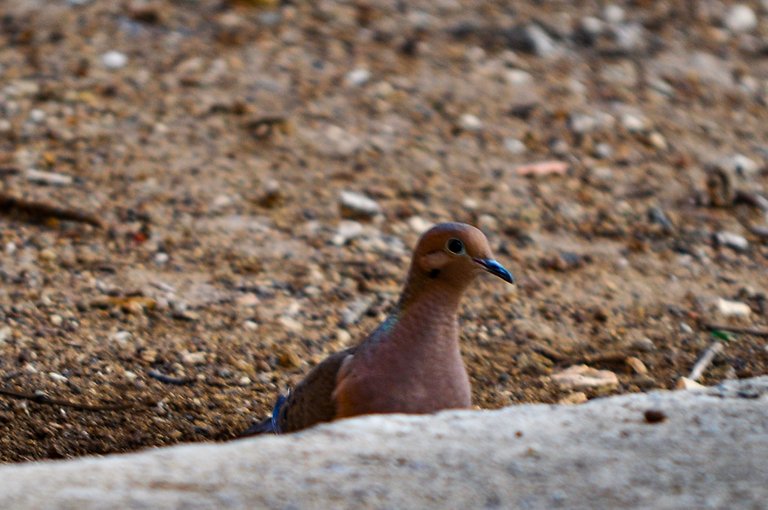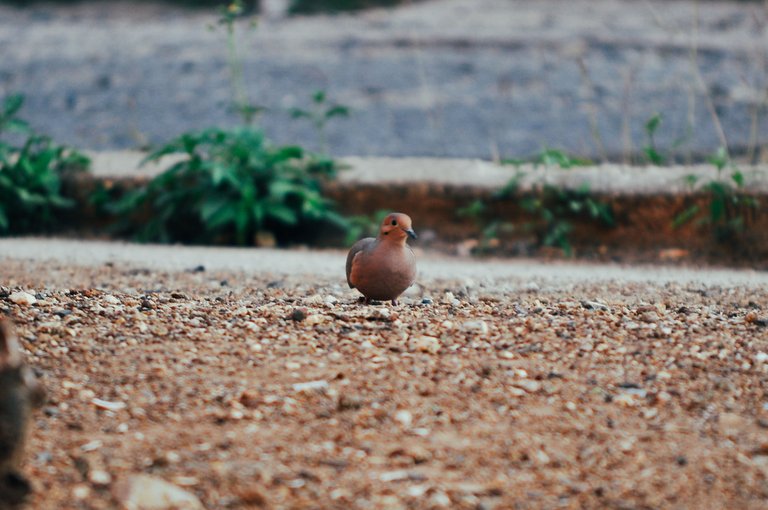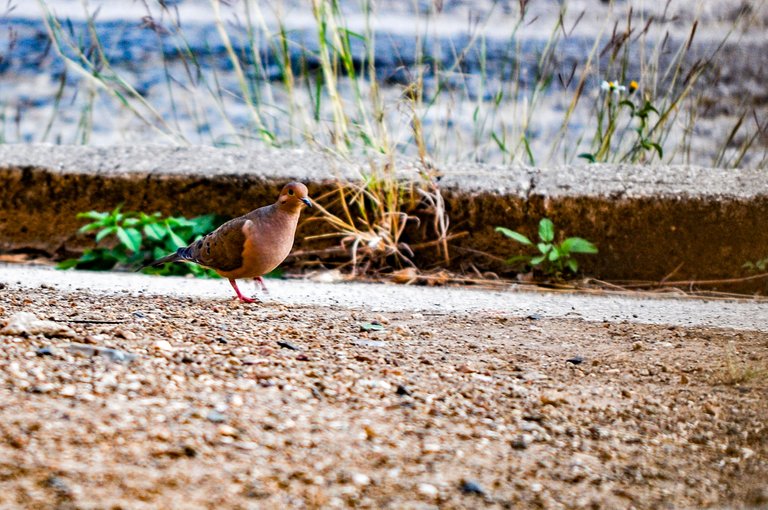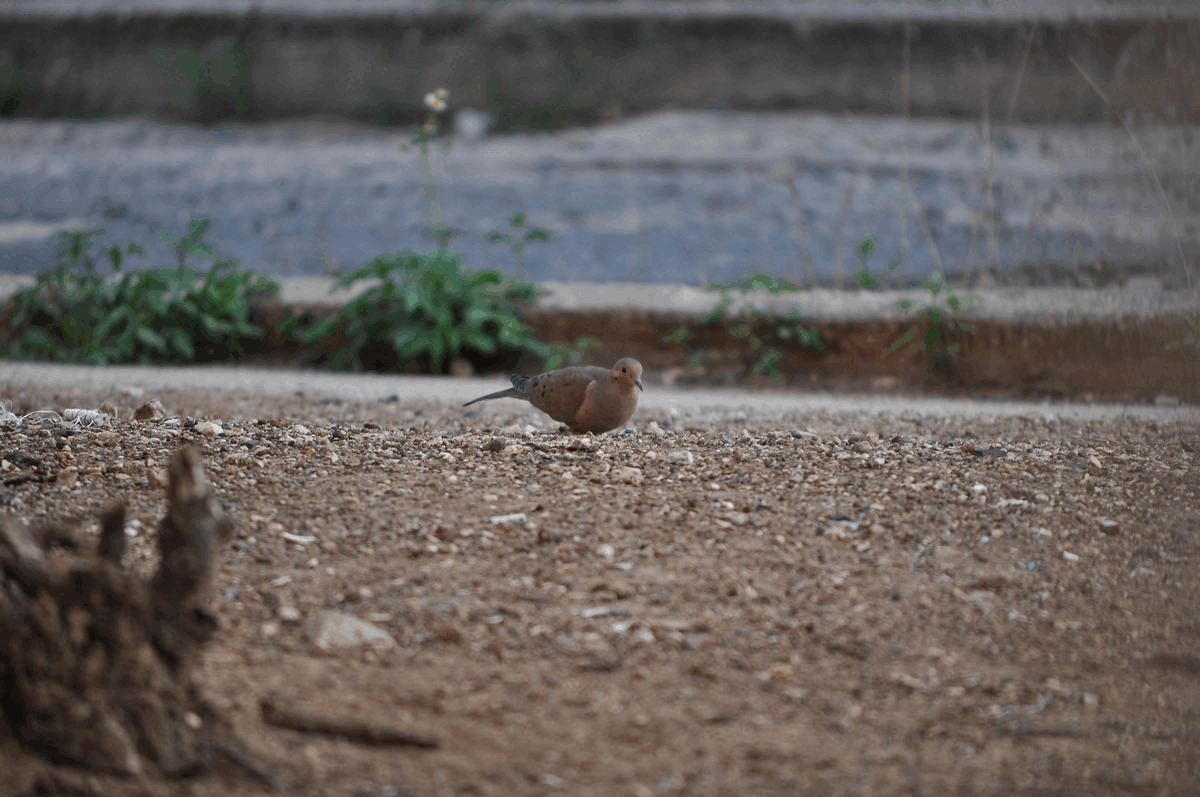[EN-ES] Rabichi pigeon

[ENGLISH - ESPAÑOL]
[ENGLISH] Hello dear friends of #ecency, a few days ago a small pigeon circled my house, in our country we know this species of pigeon as rabiche, however, I did not know the details about this bird, so I set myself the task of making a review on the subject to increase my knowledge about one more detail of nature, of which I am a follower, the findings on the review I share with you.

1/125s f/5.6 200 mm ISO 250
This pigeon has several names by which they are known in the different countries within them we can mention the following: rabichi, rabil, rabiblanca, rovalvo, rabón or palomo.
How interesting, could you tell me in the comments what they call it in your country.

1/125s f/5.6 200 mm ISO 250
Among the findings that I could find that caught my attention the most, is that this bird is considered according to a law of the Government of the Canary Islands, as a natural symbol of the island of La Gomera. (i didn't think it was that important).

1/125s f/5.6 200 mm ISO 250
This one feeds on grains and fruits, that's why it comes every day to my garden where it is seen feeding on the ground of the small fruits and food residues that there are.
Its scientific name is Columba junoniae and there are more than 309 species and 49 genera distributed all over the world except in the Arctic and Antarctica, they are abundant species in tropical regions, that explains why they are so abundant in Cuba, my country.

1/125s f/5.6 200 mm ISO 250
Look at this curiosity, the oldest fossil of this pigeon is more than 30 million years old.
These pigeons have a small head, a short neck, a robust body with short legs, their plumage is smooth, shiny, of a carmelite color, they usually live in the trees where they make their nests and raise their chicks, they also have a very characteristic sound through which it can be easily identified.

1/125s f/5.6 200 mm ISO 250
I thought as they were very abundant that the female laid a lot of eggs, however, it is quite the opposite you only lay 1 to 2 eggs of white or tan color, it seems that their abundance is related by the non-existence of this bird in our country.
In some countries it is in danger of extinction and the house of this bird has been banned, it is currently included in the National Catalog of Threatened Species in the category of special interest, in La Gomera, La Palma and Tenerife.

1/60s f/5.6 200 mm ISO 200
They knew, that they are capable of transmitting a disease called histoplasmosis, which is a disease that affects the lungs in humans and can bring serious consequences, the way it is transmitted is through spores of the fungus that grow in the soil from the excreta of birds and then through the wind they can be inhaled by humans causing the disease.
Attention, it is not the only disease that they can transmit, but I am not going to scare you, or teach a medicine class, the objective is to illustrate some of its characteristics more, the photos that I show you in the body of the text, which were taken with my Nikon D 5000 camera and a 55-200 mm nikkor lens.

Well friends so far what I reviewed and found about this little bird, I hope it was of interest to you, that you liked it, you can give me some comments, I just have to wish you an excellent weekend and until next time.
Kind regards.
BIBLIOGRAPHY
[ESPAÑOL] Hola queridos amigos de #ecency, hace días una pequeña paloma ronda mi casa, en nuestro país conocemos esta especie de paloma como rabiche, sin embargo, desconocía los detalles sobre esta ave, así que me di a la tarea de hacer una revisión sobre el tema para incrementar mis conocimientos sobre un detalle más de la naturaleza, de la cual soy un seguidor, los hallazgos sobre la revisión las comparto con ustedes.

1/125s f/5.6 200 mm ISO 250
Esta paloma tiene varios nombres con los cuales se les conoce en los diferentes países dentro de ellos podemos mencionar los siguientes: rabichi, rabil, rabiblanca, rovalvo, rabón o palomo.
Que interesante, me pudieras decir en los comentarios como es que la llaman en tu país.

1/125s f/5.6 200 mm ISO 250
Dentro de los hallazgos que pude encontrar que más llamó mi atención, es que esta ave está considerada según una ley del Gobierno de las Islas Canarias, como símbolo natural de la isla de La Gomera. (no pensé que fuera tan importante).

1/125s f/5.6 200 mm ISO 250
Esta se alimenta de granos y fruticas, por eso es que viene todos los días a mi jardín donde se le ve alimentándose en el suelo de las pequeñas frutas y residuos de alimentos que hay.
Su nombre científico es Columba junoniae y existen más de 309 especies y 49 géneros distribuidos por todo el mundo salvo en el Ártico y en la Antártida, son especies abundante en regiones calidad, eso explica por qué abundan tanto en Cuba, mi país.

1/125s f/5.6 200 mm ISO 250
Miren esta curiosidad, el fósil más antiguo de esta paloma tiene más de 30 millones de años.
Estas palomas tienen la cabeza pequeña, el cuello corto, el cuerpo robusto con patas cortas, su plumaje es liso, brillante, de un color carmelita, generalmente viven en los arboles donde hacen sus nidos y crían a sus pichones, tienen además un sonido muy característico a través del cual se puede identificar fácilmente.

1/125s f/5.6 200 mm ISO 250
Yo pensaba como eran muy abundante que la hembra ponía muchos huevos, sin embargo, es todo lo contrario solo pones de 1 a 2 huevos de color blanco o tostado, parece que su abundancia está relacionada por la no casa de esta ave en nuestro país.
En algunos países está en peligro de extinción y se ha prohibido la casa de esta ave, en la actualidad se encuentra incluida en el Catálogo Nacional de Especies Amenazadas en la categoría de interés especial, en la Gomera, La palma y Tenerife.

1/60s f/5.6 200 mm ISO 250
Sabían, que son capases de trasmitir una enfermedad llamada histoplasmosis, la cual es una enfermedad que afecta los pulmones en los humanos y puede traer consecuencias graves, la forma en que se trasmite es a través de esporas del hongo que crecen en el suelo a partir de las excretas de las aves y después a través del viento pueden llegar a ser inhaladas por el ser humano causándoles la enfermedad.
Atención, no es la única enfermedad que pueden trasmitir, pero no los voy asustar, ni impartir una clase de medicina, el objetivo es ilustra alguna de sus características más, las fotos que les muestro en el cuerpo del texto, las cuales fueron tomadas con mi cámara Nikon D 5000 y un lente nikkor de 55-200 mm.

Bueno amigos hasta aquí lo que revisé y encontré sobre esta pequeña ave, espero que haya sido de su interés, que les haya gustado, me puedan dar algunos comentarios, solo me resta desearles un excelente fin de semana y hasta la próxima.
Saludos cordiales.
BIBLIOGRAFÍA



🙋🙋🙋🙋
